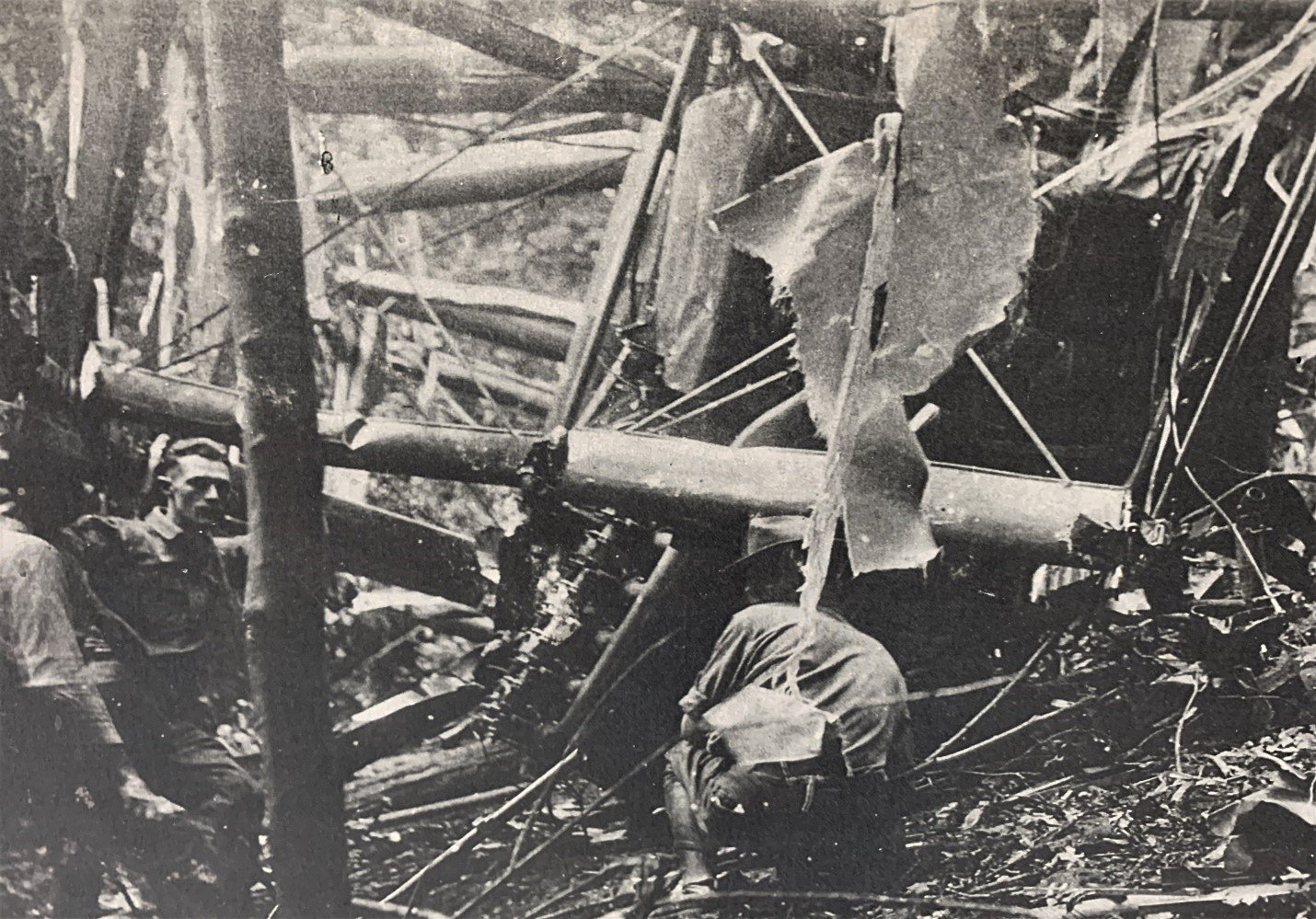Bomber Crashed in a Ravine – Western Nicholas County, WV, USA
By Robert Johnson
Twin-engine US Air Service bomber, Martin NBS-MB-1, No. 5
Following the Battle of Blair Mountain, a U.S. Army Air Service (USAAS) Martin NBS-MB-1*—Bomber No. 5—crashed near Drennen, Nicholas County, West Virginia. Its role in suppression of the largest armed uprising since the Civil War was thereby etched into the hills of West Virginia and into the labor history of our Nation.
In a brilliantly recounted piece, David Sibray, Editor-in-Chief of the WV Explorer Magazine, tells the story of Martin MB-1 Bomber No. 5. The bomber fell from the sky during a storm southwest of Summersville, Nicholas County, West Virginia on September 3, 1921. The bomber crash untimely ended its planned engagement days before in the Battle of Blair Mountain. Four members of the air crew were immediately killed in the crash and a fifth member was severely injured. Along with two other bombers, the aircraft had been supplied on direction of U.S. President Warren G. Harding to drop gas bombs on striking miners. General Billy Mitchell was fully prepared to ‘gas’ the miners. Mitchell recalled the three bombers back to Langley, Virginia from an airfield in Kanawha City, West Virginia. With Bomber No. 5 heading the flight, it dropped from the formation during a storm.
Although flying solidly in the face of American democracy, the planned bombing sorties were the first and only instance of the U.S. military fully prepared to drop ordnance on American citizens. The Battle of Blair Mountain is also, unfortunately, a demonstration of the ends to which the coal barons would go to quell labor rights. Aside from the contractual and private armed ‘security’ forces hired by the coal operators, local law enforcement officers, the state National Guard and federal troops were also tapped into service to force miners back to the coal mines in southern West Virginia.
According to Smithsonian Magazine writer, Abby Lee Hood, "The Battle of Blair Mountain saw 10,000 West Virginia coal miners march in protest of perilous work conditions, squalid housing and low wages, among other grievances." There are many well-written accounts of the history of the Mine Wars in southern West Virginia during late August to early September 1921. Readers are encouraged to further research the dark history of this labor standoff.
One of two photos of the Bomber No. 5 crash site, 5 September 1921. Photographer unknown.
Fellow member of the Nicholas County Historic Landmark Commission, Ken Summers has direct family knowledge of the Bomber No. 5 crash. His great-grandfather, Homer Jenkins Summers lived on a farm several miles from the crash site in Lockwood. Homer J. Summers had one of the few working telephones in the vicinity at his farm. The military response personnel used the farmhouse as a base of operations during the search party assignments and the recovery efforts following the crash.
One of two photos of the Bomber No. 5 crash site, 5 September 1921. Photographer unknown.
The historical significance of Bomber No. 5 does not end with the tragedy stated above. It was also part of a squadron that made good the Billy Mitchell tout to the U.S. Navy, that surface ships were vulnerable to attack from the air.
Please see ‘Part II’ of this blog entry.
* The aircraft was originally termed ‘MB-2’. “NBS” stood for “night bombardment, short distance.”
** A total of 11 Army De Havilland Dh-4Bs made it to Kanawha City along with the three [EB]MB-2s. Local Sheriff Chafin had also rented three privately-owned biplanes, which succeeded in dropping teargas and other ordnance on striking miners. None of the federal aircraft participated in the bombing runs, but some served for aerial reconnaissance.
Robert C. ‘Bob’ Johnson, President
Nicholas County Historic Landmark Commission
Appalachian Forest National Heritage Area





